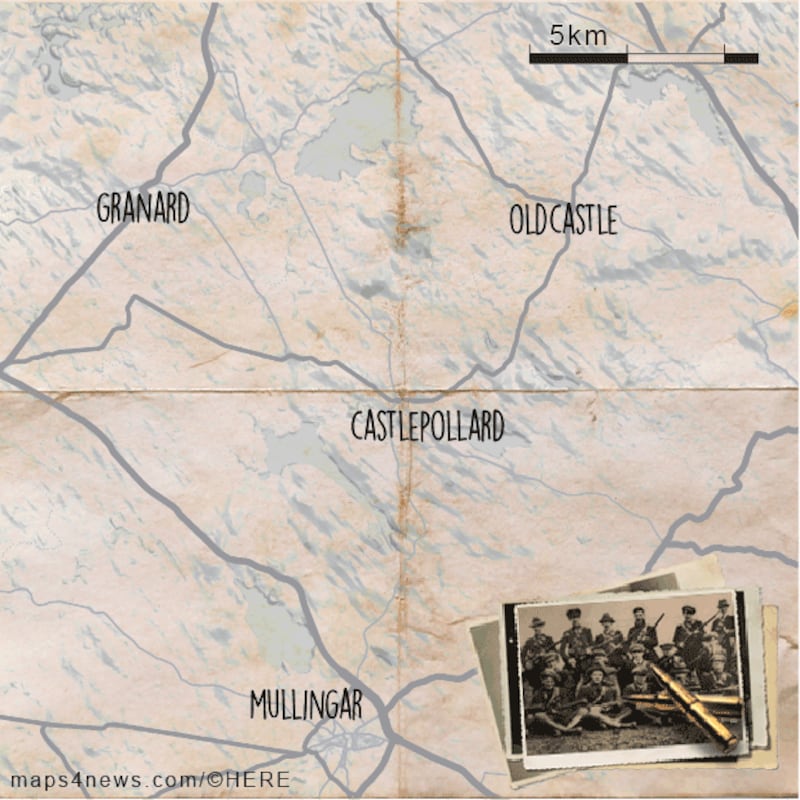County: Westmeath
Incident: Assault on Castlepollard Barracks
Date: July 11th, 1921
One of the last incidents in the War of Independence took place in Castlepollard, Co Westmeath, on July 11th, 1921, the day the truce came into operation.
There was much jubilation and relief across the country after a truce was agreed on July 9th between the Dáil and the British military in Ireland.
It was due to come into effect at midday on July 11th once all IRA brigades had been informed.
Many IRA units were exhausted, thousands of men were in jail and ammunition was running low. Others though, wanted one more crack at the British before hostilities ceased.
Among them were men in Westmeath under the command of Seán Boylan, the father of the Meath football manager. Boylan Snr sent word that every RIC barracks in his area was to be attacked on the day of the truce.
Only one major assault occurred as a result of his command. Men from the 2nd battalion and 3rd battalions (Mullingar Brigade, 1 Eastern Division) attacked Castlepollard RIC, which had a garrison of 40 constables.
An account of the attack states that it began at 10.30am on July 11th. The men took up position in a wood near the barracks at a distance of about 120 metres. The attackers were armed with four rifles, shotguns and 100 to 150 rounds of ammunition apiece.

The attack was called off at midday. According to a statement given to the Bureau of Military History by James Maguire, the brigade commander in Mullingar, who led the raid on Castlepollard, "we gave them a royal salute until the bell rang the Angelus, and we went off".
The 1st battalion (Mullingar Brigade, 1 Eastern Division) based in Mullingar wrote a long letter seeking to explain its lack of activity in what was then a garrison town.
The men of the battalion were “placed in the centre of an enemy armed”, according to the officer commanding, Michael McCoy.
The British military garrison had a strength of 1,100 officers and men with a barracks situated in the centre of the company and “within striking distance of all and every operation that took place in the battalion area”.
McCoy also stated that they had to deal with a “hostile population” within the town.
What they lacked in direct action against Crown forces, they made up, according to themselves, in intelligence gathering.
The Mullingar company of the 1st battalion claimed to have the most up-to-date system of intelligence in the country, capable of deciphering codes in advance of IRA general headquarters.
“The intelligence supplied by the Mullingar intelligence department was regarded as most valuable for the movement of enemies, RIC and military raids on certain areas, the plans of which many instances being frustrated.”
The company claimed that information it had deciphered had led to the capture of Mallow Barracks in September 1920, the only barracks captured by the IRA in the War of Independence. It, in turn, led to the burning of Mallow by the Black and Tans, an incident which generated international condemnation.
See also:
[ Mullingar Brigade, 1st Eastern DivisionOpens in new window ]









